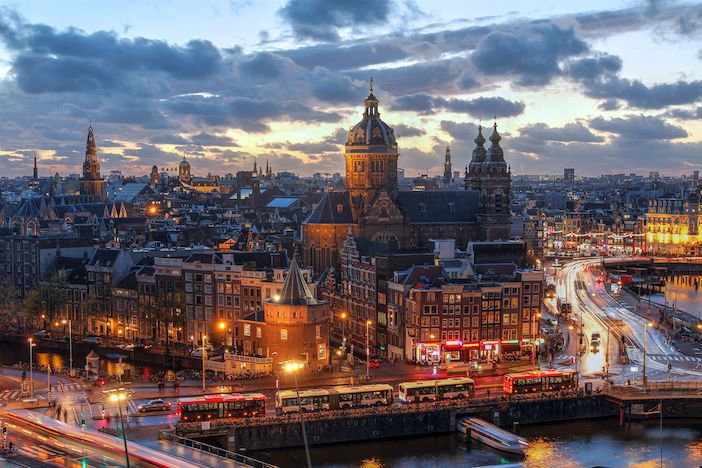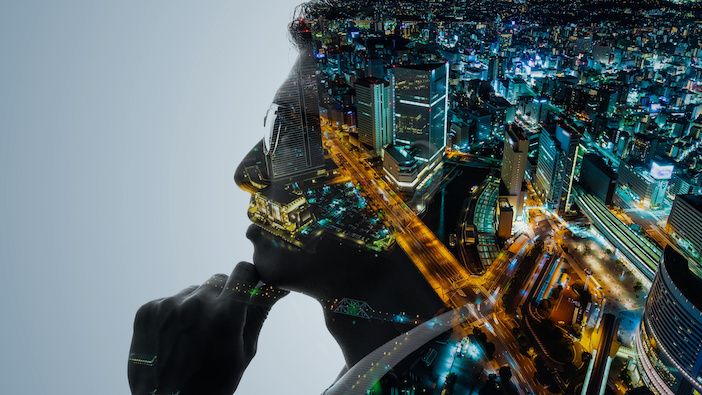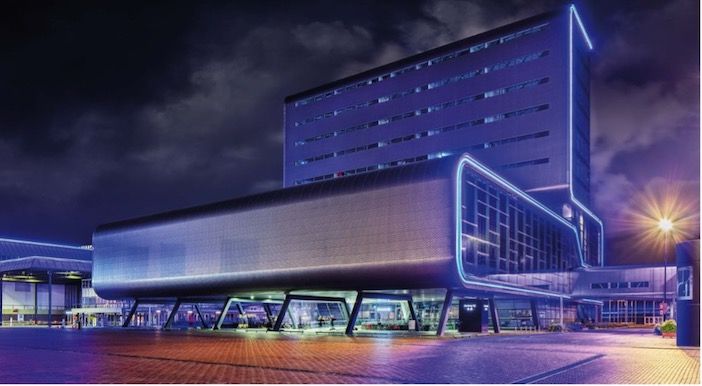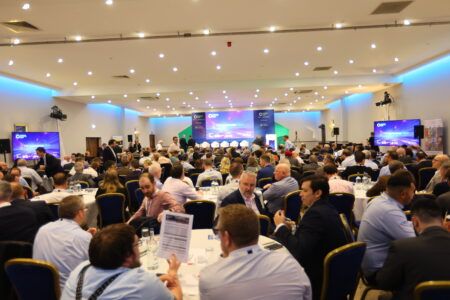After four years of waiting the day has finally arrived for the opening of Intetraffic Amsterdam (March 29). Thousands of visitors are in the Dutch capital for the event that promises over 800 exhibitors from 52 countries spread over 5 segments in 11 halls.
The event, which is also celebrating its 50th anniversary, will also feature over 120 sessions in the free-to-attend Intertraffic Summit and Demonstration Programme.
Intertraffic may be celebrating half a century since its inception, but you don’t have to look back that far to see how dramatically things have changed. “If you looked at Intertraffic 20 years ago, it was all hardware for making roads safer,” says Carlo van der Weijer, general manager of the Eindhoven AI Systems Institute at Eindhoven University and member of the Advisory Board for Intertraffic. “And they did a good job, because we have had a huge increase to safety on the roads.
“And just 15 years ago, when you left your house, you wouldn’t be able to get an accurate arrival time for your trip because there was no such thing as navigation systems with live traffic information. You cannot imagine that nowadays, that change has been so fast.
“We have already achieved a lot, but we can go even further with data. Data can show us exactly what’s happening, so we can control it. So, the focus on digitalization is certainly a good thing.”

Data driven
Indeed, data is one of the big focuses for Intertraffic Amsterdam 2022. With each passing month new data nodes are being deployed on our Stand 01.519 transport networks in the form of not only connected roadside infrastructure, but also connected vehicles and even connected citizens, who become part the digital mobility ecosystem via their smartphones.
What all this data means is there is a rapidly growing potential to build up richer pictures of transportation demands and network pinch points, which presents the tantalizing possibility of seamless traffic flow. But without smarter ways to both collect and analyze data, this potential may never be realized. That’s where the experts and innovators at Intertraffic Amsterdam will come in.
Pieter Litjens is chairman of the Intertraffic Awards jury, and also managing director of CROW, a Dutch non-profit technology platform fostering collaboration between public and private sectors in transport, infrastructure and public space. In his work he increasingly sees this need to make good use of data that is collected. “It’s important to identify the real worth of the gathering of data,” says Litjens. “The question is not, how much data can you gather? But, what do you do with it? How do you make it work?”
There are multiple solutions on display at Intertraffic to help with data analytics, but making the best use of data isn’t only about new technology, it’s also about making the right new connections with people. This is where Intertraffic offers invaluable assistance.

“Connecting with other parties with other visions, makes your own vision stronger,” says Litjens. “And that’s what we’ve lacked in the last couple of years, when we didn’t have the opportunity to meet up to exchange best practices. We had to do it online, which isn’t the real thing. And that’s one of the biggest advantages of coming back together in Amsterdam. We’ll meet old, acquaintances, but also make new connections, to help us find better solutions.”
And perhaps the most valuable connections are the ones Litjens himself specializes in with his work at CROW – those that bridge the public-private divide. When such partnerships are made, the value of data is multiplied.
Public authorities have traditionally been guarded about sharing sensor data, not wishing to cede control of vital transport networks. But, increasingly, smart private players are bringing new data collection techniques and smart analysis to the table that cannot be ignored. A balance must be struck and Intertraffic Amsterdam is the place deals can be done.
“A lot of public and private parties will meet at Intertraffic in order to find solutions, because they have to cooperate,” says van der Weijer. “For example, TomTom is now cooperating with the government to share data to improve traffic flow at intersections, so they know when to add a extra green time at traffic lights. There will be plenty more new examples like this that begin at Intertraffic.”
Margriet Van Schijndel-de Nooij, program director for smart mobility at Technical University of Einhoven, and member of the Intertraffic Awards jury, is similarly looking forward to the in-person meetings. “You have be able to see – and even feel – the innovations in order to really go deeper into what they actually are. You need to ask all the clever (and the stupid!) questions. You can’t get that from a journal paper.
“There’s an added value of walking around seeing things. It also helps you to grasp what the next step might be and work out the use cases and business models for innovations. It helps to bring innovation into the real world.”

Artificial intelligence
Perhaps the ultimate data analytics tool is artificial intelligence. There has been a rapid rise in AI systems in the transportation industry in the past decade, but the systems must be built carefully in order to maximize the benefits.
“Artificial intelligence is machines trying to think like humans,” says van der Weijer. “And they can help us to build better systems if we design the machine-man interface well – and that’s what’s happening at the moment.
“There’s also a lot of talking talk about artificial intelligence in self-driving cars with robo-taxis potentially taking over all of mobility. I’m not such a believer in that kind of mobility. I think it’s a solution looking for a problem. But I do expect that automated systems – such as ones that take over just before an accident – could help to make vehicles one day inherently safe. My biggest frustration is that most of the accidents that happen nowadays could be prevented with technology, so we should implement safety technology as fast as possible in traffic systems.”
Whether that technology is artificial intelligence or the latest innovative crash barriers, Intertraffic is the place where all solutions can come together and solve mobility problems to create a better future.
“What I like about Intertraffic is that it’s diverse,” says Margriet Van Schijndel-de Nooij. “When it comes to improving our mobility system, there is no silver bullet. Some events focus on just one type of technology, but at Intertraffic you see many different types of technologies for diff erent application areas. And for me, that’s really important – safety can’t be improved with just one solution and emissions can’t be solved with only electric vehicles. We need a viable mix of smart solutions. It’s even important to have some solutions that fail, because sometimes we learn more from failure than success. Perhaps we’ll share some failures in Amsterdam, but I’m sure we’ll be sharing more success.”

Intertraffic Innovation Awards
The Intertraffic Awards will be presented during the opening ceremony in Amsterdam on March 29, 2022. One winner will be chosen by the international panel of experts from each of the three categories:
• Green Globe Award Recognizing solutions, products and working practices helping to create sustainable transport systems.
• User Experience Award Showcasing transport systems that break new ground by seamlessly interfacing with human operators.
• Inspiration Award Recognizing essential solutions that push innovation to the next level.
“The Awards are hugely worthwhile for the industry , It makes companies focus on improving and inventing,” says chairman of the awards jury Pieter Letjins.
You can read the full version of this article in the March 2022 edition of TTi magazine




